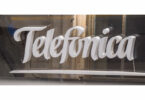A new report published by MadHive, AdLedger and Industry Index describes AdTech being a ‘fundamentally broken industry’ that ‘must change now’.
The report, aptly titled ‘Complexity, Opacity & Frustration: Why AdTech Must Change Now’ argues that the market finds itself in a strange situation. Namely, AdTech buyers are frustrated with the poor performance of technological solutions and problems of fraud, opacity and complexity, which these solutions are supposed to solve. Nonetheless, they are still looking to add to their technology stack. Or to put it more clearly, buyers are unhappy with their purchases but are still making those same purchases.
The ‘technology stack’ of AdTech buyers refers to the number of technologies that marketers use. They need them to make the best decision on when, where and how to advertise. The study performed by Industry Index Research found that on average participants use 28 different advertising and marketing technologies.
However, according to the report, these solutions perform poorly. A survey conducted by the authors revealed that ad fraud, transparency and brand safety are the areas about which advertisers and publishers have the most concerns. Indeed, 71% of respondents say that Fraud Control Tools perform the worst.
Ad fraud is expected to be $5.8 billion this year, according to Adweek. Some estimates are far higher, as much as $30 billion.
Who is to blame?
The report points the finger squarely at the AdTech vendors. Technology allows for opacity and opacity perpetuation. In essence, the AdTech vendors are providing solutions for the problems they created. This is due to the structure of the industry itself. AdTech vendors are unable to cut out the middleman when, according to the report, they themselves are the middlemen.
Indeed, the situation becomes darkly comical when 8 out of 10 marketer and publisher survey respondents expect AdTech vendors to fix the problems with the AdTech ecosystem.
What’s the solution?
The solution is not a cull of technology stacks. Fraud would still exist, and brands would still be at risk. However, the situation is too complicated for AdTech buyers to fix, and there is no incentive for the AdTech vendors to make changes.
What the authors envisage is a new foundational structure. The structure would be transparent and simple by default so that marketers can easily see where spend goes, how effective the ads are, and whether their technology stacks are performing as expected.
Blockchain would be the prevailing technology in this new structure. It provides incorruptible and immutable proof and so does away with the current trust-based model.
This would allow publishers and marketers to get the transparency, simplicity and safety they so desire, and the performance of ads would be their responsibility. Most critically, however, AdTech vendors would be forced to work within those market forces and provide effective and cost-efficient solutions.
Madhive develops TV advertising solutions that incorporate a variety of technologies including blockchain, cryptography, AI and automatic content recognition (ACR). Its clients include the likes of Premion and Tegna for whom it has developed video ad solutions.
The CEO of MadHive, Adam Helfgott, is also the project lead for Mad Network, a separate entity which ran a $25 million ICO early last year. In the Mad Network whitepaper it explained that “the MAD Network team aims to improve an already profitable ad tech company, MadHive, by constructing a decentralized infrastructure for programmatic advertising.”
AdLedger is a consortium focused on developing standards and solutions for the digital media and blockchain industries. Its members include IBM, Publicis Media, IPG Mediabrands and many others.






